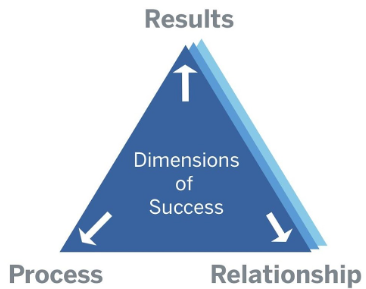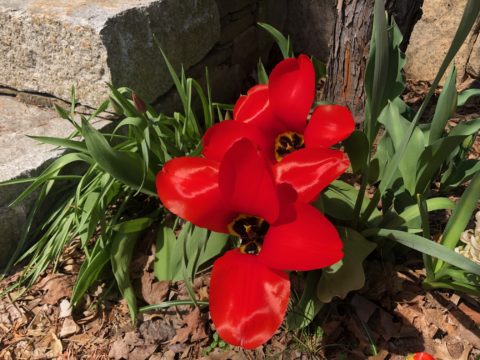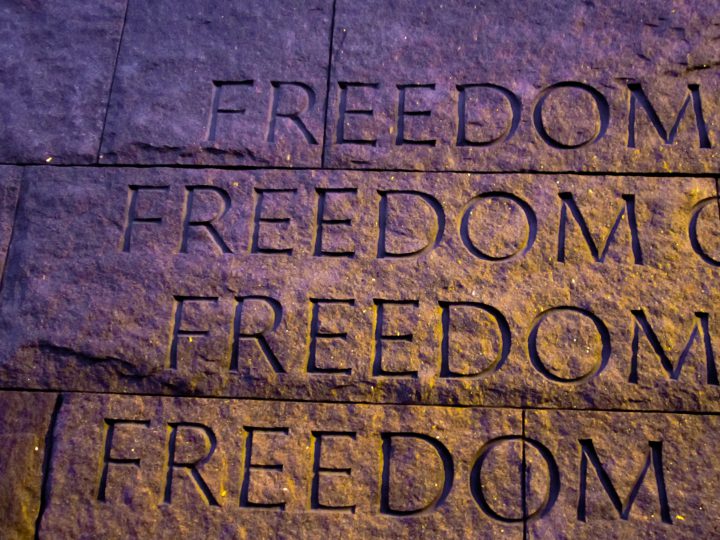Tag Archive: IISC
February 7, 2024
“Our life is frittered away by detail. Simplify, simplify, simplify!
I say, let your affairs be as two or three, and not a hundred or a thousand; instead of a million count half a dozen …
and keep your accounts on your thumb-nail.”
– Henry David Thoreau
Image by Bill Smith, shared under provisions of Creative Commons Attribution License 2.0.
Earlier this week I posted on our blog a piece drawing from lessons learned in over a dozen years of supporting Food Solutions New England to launch and evolve as a network. These lessons were also drawn from other collaborative networks we have supported over the years at IISC, and fed forward into our work with FSNE, not as a way of forcing fit, but seeing if the system/network reacted favorably.
A colleague and collaborator from outside of IISC read the post and fed it to into an AI interface and asked about the top three take-aways (the original post has a list of 25 developmental milestones and lessons). That generated a very interesting summary, which I continued to play with a bit. Collaborating in this way has yielded the following three core elements for long-term collaborative and networked success in our experience, without declaring final victory (which is surely a bit of fiction).
1. **Foster a Culture of Collaboration and Shared Vision/Values**: The importance of working together as a collective rather than as isolated entities underscores the need for a unifying vision and values. The vision and values should bridge real and perceived differences, creating a sense of belonging and purpose across diverse groups. Co-creating a guiding vision and values not only aligns efforts but also amplifies impact through collective action. Engaging in storytelling and shared experiences, like breaking bread together, further solidifies shared vision and values by humanizing the collaboration, making it more than just a professional undertaking. This approach encourages a deeper understanding and appreciation of one other, fostering a more cohesive and inclusive network.
2. **Build and Maintain a Robust, Trust-Based Network**: The call to build networks that are vertical, horizontal, and diagonal emphasizes the importance of creating spaces where trust and accountability can become the foundation. This involves not only bonding within similar groups but also bridging across different ones, ensuring a rich tapestry of connections that are resilient and creative over time. These networks are strengthened by dedicated support for convening, coordination, and facilitation, ensuring that collaboration is effective. Enrolling network weavers or ambassadors to keep the network vibrant and inclusive is crucial through ongoing outreach.
3. **Commit to Continuous Learning, Equity, and Systemic Saluto-genesis**: Recognizing and addressing social inequities within the system is vital for achieving a fair and sustainable future. This involves a commitment to racial and other forms of equity, both broadly and deeply. Leveraging “network effects” for spreading learning, understanding the persistence of dominant systems/power structures, and identifying leverage areas for “collective impact” are critical steps towards systemic saluto-genesis (ongoing health-promotion for all “participants” in the system and the system as a whole). This also highlights the need for integrated policies that reflect the network’s core vision and values, making policy along with financial and other resources more equitably available and relevant to people. It also encourages embracing complexity while striving for simplicity in tools and approaches, preparing for disruptions, being trauma-informed, well-being oriented and dedicated to accessibility.
October 20, 2020
Just wrapping up a bit of work with a national network that we at IISC helped to get off the ground 5 years ago, which has seen incredible growth and success in its efforts, and which continues to make progress in these times. For us, what this means is that they have really been hitting on what we call the collaborative dimensions of success – results, process and relationships (see image above). That said, some parts of the network (particular working groups) are humming along more so than others.
In our latest meeting with the network, we helped incubate new working groups (now taking their total to 13!) and also held a gathering of existing working group members to come up with a list of success factors and what they wish they had known at the outset to set themselves up for success. This list will be provided to the new working groups to help them along. I was struck by how many of the items on the list below align with what we teach in Facilitative Leadership for Social Change. While there is no exact recipe for success, we have found over the past 27 years that there are certain practices that create conditions for more likely fluid collaboration. ‘
Here is a list of 27 distinct but related success factors that were identified:
- Diversity; people with different skills and experiences, a diversity of vantage points, ideas, and learning curves.
- Dividing up roles – facilitator, recorder, timekeeper, liaison, etc.
- Willingness to grow and change our roles; not feeling one has to be in the original role.
- Establish group working agreements for collective accountability and be open to changing them as needed.
- Strong facilitation.
- Understanding of the difference between a working group chair and facilitator (these may or may not be the same person).
- Ensure everyone feels like they are able to contribute to group conversations if they want to; check for accessibility issues of various kinds.
- Intervene around those who would otherwise dominate conversation and shut others down.
- Comfort with letting go of an idea once it has been incubated; people understand that when they generate an idea or proposal that it might be changed or critiqued by the rest of the working group, to make it better.
- Loosen grip on ego.
- Have consistent meetings and touch points – monthly or bi-weekly – to keep on track.
- Practice an ethic of love, generosity and forgiveness.
- Open up to bigger sources of inspiration and creativity.
- Build common language; make sure that everyone understands any acronyms or technical terms being used.
- Use a process guide/map for helping working groups in their overall development and work planning; they can adjust as they see fit, but having a framework can be very helpful.
- Have an agenda for your meetings and follow it, until it doesn’t make sense to do so.
- Set desired outcomes each meeting, so you can determine where any conversation or agenda item is heading and when it’s over.
- Make sure your meeting agendas are realistic … put on it what you can actually get to; prioritize and manage the conversation.
- Give people time to connect with one another.
- Check for agreement and/or for clarity around key points before moving on.
- Make sure action items/next steps are captured at the end of each meeting and restated at the top of your minutes/group memory; revisit in your next meeting.
- Conduct process reviews of meetings (what worked, what could be improved); keep what’s working and make changes accordingly.
- Keep easy-to-digest minutes/group memories to maintain momentum; having consistent and capable support around this kind of record keeping, including key agreements and next step.
- Get meeting minutes/group memories out as soon as possible to everyone, including those who may have missed a meeting.
- Support onboarding of new members, so they can catch up easily and step into the flow – think about one-on-one conversations and mentorship.
- Provide easy access to/support around accessing shared documents, tools and platforms.
- Keep group size manageable – 10 is a nice size; if more consider sub-dividing for certain tasks (think in terms of small group ministry).
April 29, 2020
Currently engaged in a number of state-wide and regional network-building initiatives focused on food, health and education system change, I am beginning to see some interesting patterns across efforts to build connectivity-based and more fluid movements for change. Watching these dynamics unfold, I can’t help but come back to one of our foundational frameworks at IISC, what we call the R-P-R Triangle, for all that it has to offer our thinking about network strategy and success.
This framework (see below) makes the point that any kind of collaborative endeavor is a multi-dimensional affair when it comes to the core determinants and definitions of success. Of course, many of us come to “net work” and collaborative efforts eager to see results, to work in new ways to have greater impact on the issues that we care most about. Without concrete results or “wins,” it is hard to keep people engaged and morale up. But results are just a part of the story, and the big results may take some time in coming.
Read More
April 16, 2020
This is the first post I ever wrote for IISC and dates back to this day 11 years ago. I have edited it only a little, in light of Václav Havel‘s passing, and it seems telling that it could have very easily been written for these COVID19 times, which are an extension of the patterns that have been at play for a while in our world.
Former (and first) President of the Czech Republic Václav Havel told a little story that may provide a little guidance in these times. In 1989, only a few months before he completed an incredible journey from prisoner to president of his country, Havel found himself in a dire situation. The dissident-poet-and-playwright-turned-politician, who had risked his life numerous times in the fight against communism, was walking with a friend in the countryside outside of Prague.
In the near total darkness, he suddenly fell into a hole, a deep pit surrounded by cement walls, which he realized was a sewer. Disoriented and covered in muck, Havel tried to move but this only made him sink more deeply. His friend above was joined by a number of people who gathered around the rim of the hole and tried frantically to rescue Havel. It was only after someone managed to find and lower a long ladder, nearly thirty minutes later, that Havel was saved from an untimely ending.
From this freak accident, Havel climbed not just to dry land, but to the presidency, a truly amazing turn of events. Having lived through a number of seemingly hopeless circumstances, Havel continued to be a profoundly hope-full man. He saw hope as a state of mind that most often does not reflect the state of the world. Hope for him emerged out of the muck of absurdity, cruelty, and suffering, and reached not for the solid ground of what is certain, but for what is meaningful, for what fundamentally makes sense. Hope, in his view, was not the same as optimism. It was not the belief that something would ultimately work out, but that it felt true in a very essential way, beyond what was relayed in headlines, opinion polls, and prognostications.
Obviously we are now faced with circumstances that demand some faith on all of our parts. With the uncertainty of a volatile economy and a swirl of other forces, there is plenty to be pessimistic about. And if we consider Havel’s story, the antidote is not to be optimistic in the sense of desperately looking for something that tells us everything will be alright or return to being as it was. Rather, the more powerful response comes from within and attaches itself to what most deeply motivates us, what tastes most like truth.
Peter Forbes of Knoll Farm once said that, “New culture is formed by people who are not afraid of being insecure.” (maybe because they realized that security is over-rated or not really a thing). That may be the promise of this slowdown, if we can quiet the chatter, avoid panic and attune ourselves to what is waiting to grow out of the cracks in the foundation. The question is, in following those roots and shoots, how far are we willing to go? And who will be out fellow travelers?
How can we go from emergency response to stewards of emergence?
February 19, 2019

Photo by tracydekalb, “Redbud Love,” shared under provisions of Creative Commons Attribution license 2.0.
The following post was originally published in 2014, and has been edited. In many ways it feels even more relevant five years later …
Over the past dozen years or so at IISC (our half-life as an organization, and my whole life as a member of this amazing community), we have seen and experienced some interesting progressions. In our Facilitative Leadership for Social Change trainings and consulting work, we talk about the “interior condition” of effective collaborative and network leadership. When I first joined the organization, we used to say that collaborative leaders and change agents embraced an ethic of “service, authenticity and respect.” Then we made the move of changing “respect,” which came across to some as a bit weak, to LOVE. For the first couple of years after making this switch, when we asked “What’s love got to do with it?” with respect to effective leadership and work for social change, there were definitely some uncomfortable silences. Some participants would ultimately want to rename love as “respect” or “passion.”
Then in 2009 we started noticing a change. More heads nodded in rooms when we mentioned the “L-word,” less nervous laughter and shifting in seats. In one particularly striking instance, during a training with health care and public health professionals, a senior and very respected physician responded,
“What’s love got to do with it? Everything! Beyond my technical skills, I am effective in so far as I am able to really see my patients, students, and colleagues, to make them feel seen for who they are.”
Read More
January 22, 2019
“The rush and pressure of modern life are a form, perhaps the most common form, of its innate violence. To allow oneself to be carried away by a multitude of conflicting concerns, to surrender to too many demands, to commit oneself to too many projects, to want to help everyone in everything, is to succumb to violence.”
The quote above has been cited every now and then over the past dozen years or so that I have been with IISC, including a later line – “The frenzy of our activism neutralizes our work for peace.” Some combination of these words seem to come to mind and lips more frequently as many of the organizations and networks with which we work are are dealing with oppressive dynamics of overwork and urgency, whether they identify as activist or not.
These dynamics are increasingly recognized as an aspect of white dominant and supremacist culture and hyper-capitalist fervor that reduces many people to “producers” in the workplace and extracts as much labor as they can give. In our race equity and social change work, we see this as part and parcel of the structures that must be named and addressed for justice, liberation and sustainability to be realized.
In a recent workshop with an organization we are supporting through a two-year race, equity and inclusion transformation process, we invited the predominantly white staff into a dialogue circle to unpack their self-identified culture of overwork and urgency, to look more deeply at what they are gaining from this (and who in particular gains most), what they are losing (and who loses most), and what it would take to do commit to creating something different. Here is some of what we have heard, aspects of which are being echoed in various other organizations, networks and communities (curious to know what resonates): Read More
December 27, 2018
“I need love
Not some sentimental prison
I need god
Not the political church
I need fire
To melt the frozen sea inside me
I need love.”
– Sam Phillips

Image by Luke, Ma, “Love by Nature,” shared under provisions of Creative Commons Attribution License 2.0.
I started this year with a post focused on love, and this idea that 2018 would be the year of love. This thinking wasn’t offered through rose-colored glasses, but from a shared sense and conviction that love would be required to see the year through. And not just any kind of love. In that original post there were a few definitions and quotes that we have been playing with at IISC, including these:
“All awakening to love is spiritual awakening… All the great social movements for freedom and justice in our society have promoted a love ethic.”
– bell hooks
“Justice is what love looks like in public.”
– Cornel West
“To show compassion for an individual without showing concern for the structures of society that make him [sic] an object of compassion is to be sentimental rather than loving.”
– William Sloane Coffin
“Love is seeing the other as a legitimate other.”
– Humberto Maturana
“The ultimate act of love is allowing ourselves and others to be complex.”
December 17, 2018

Image by Graylight, used under provisions of Creative Commons Attribution license 2.0.
As I was just starting work at IISC, back in 2005, our founding Executive Director Marianne Hughes, introduced the staff to the work of John Paul Lederach, and specifically his book The Moral Imagination. As I recall, she did this as a result of a sabbatical during which she explored the power of networks and of art in social change. These two things show up centrally in Lederach’s work. Lederach has spent years doing peace and reconciliation work in some of the most intense and entrenched conflicts in the world. And he writes not really as a master technician, but as a poet, which is very much by intention.
I thought of The Moral Imagination a couple of months ago, when I began to realize how starved many people I meet seem to be for alternatives to what we currently have as mainstream systems in this country. Many are speaking up against and resisting what is not working, has long been unjust, and is fundamentally sustainable, which is crucial. And in the absence of clear alternatives (see “reimagine” and “recreate” in Spirit in Action’s image below), what can ensue is … conflict. Entrenched conflict, with no creative point of release.
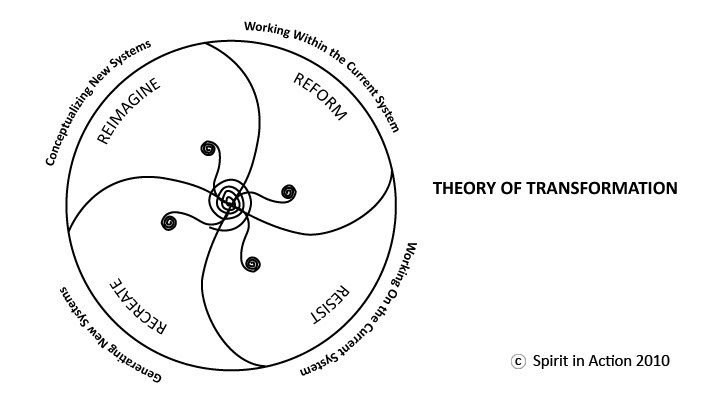
I also thought of Lederach’s book, because he writes how central networks, human webs, and authentic human connection is to the work of peacebuilding and reconciliation. Up until recently I had thought about peacebuilding as a field as having more to do with what goes on in “other places” like Ireland, Sudan, Colombia, Tajikistan. If nothing else, these past couple of years have provided a need to adjust that understanding – peacebuilding is needed at home.
So I’ve been scouring Lederach’s writings, and there is a lot that resonates. Lederach was recently featured on a powerful program of On Being with actress and activist America Ferrera (no doubt another reason he has been on my mind). There is much to say about The Moral Imagination, but for now I am offering some passages and quotes that struck a chord and I’m curious to hear what reactions those reading have … Read More
November 6, 2018
“Community exists when people who are interdependent struggle with the traditions that bind them and the interests that separate them so they can realize a future that is an equitable improvement on the past.”
-Carl Moore (quoted by Dr. Ceasar McDowell)
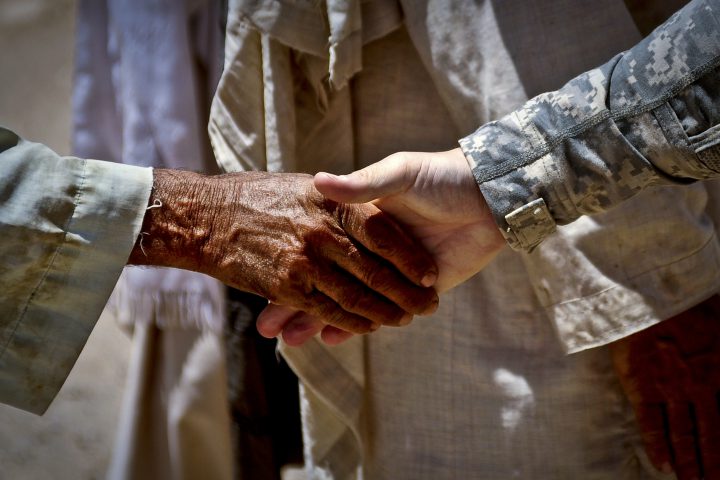
A couple of weeks ago I attended a gathering of network thinkers and doers pulled together by Steve Waddell and Diane J. Johnson, on behalf of the Emerging Network Governance Initiative. Our time together was designed for us to (1) get to know one another better and our respective work (because that’s what network weavers do) and (2) explore possibilities for collaboration to bring different network processes and forms of governance to bear at various scales in the face of the struggle/failure of traditional government to hold and do justice to demographic complexity and address a variety of social and environmental issues.
We spent some time early on unpacking the words “emergent,” “network” and “governance.” While we did not come to final agreement on set definitions, here is some of what I took from those conversations.
Emergent and emergence refer to the dynamic in networks and in life in general through which novelty arises in seemingly unexpected ways.
What is emergent is not planned per se, but rather surfaces through complex interactions between parts of or participants in systems.
Read More
October 9, 2018
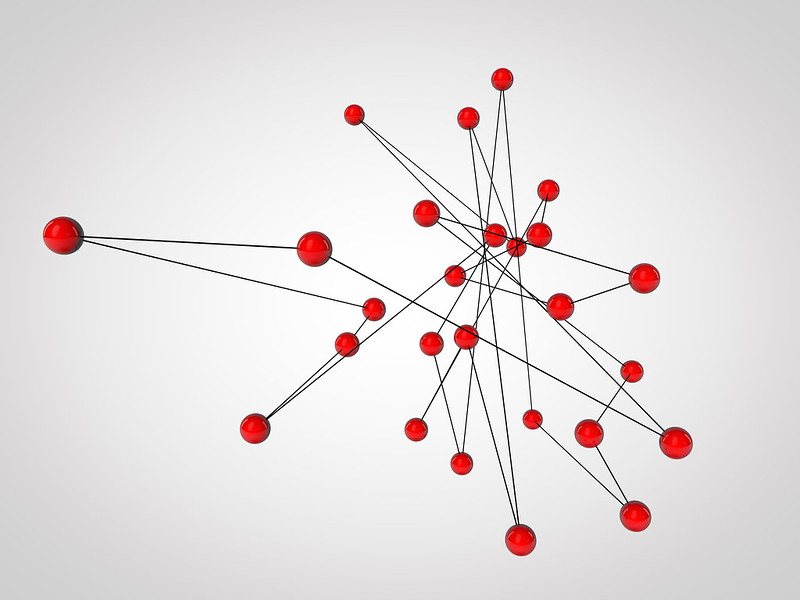
The following post originally appeared on the IISC site four years ago. It has been slightly revised and is offered here to help those focused on leveraging “network efforts” with their change efforts to consider how they might shift and align their thinking and actions.
This post builds on another focused on the power of asking “beautiful questions” and inspired by a staff challenge to articulate lines of inquiry stemming from IISC’s collaborative change lens, It distills some of the underlying questions that adopting a “network lens” inspires for social change work. Please add, adjust, edit, and rift!
- How does your organization/network/change initiative strive to add value to (rather than duplicate) existing efforts? What do you do best, and how might you then connect to the rest?
- What are you doing to support and strengthen connections and alignment within and beyond your organization/network/change initiative?
- What current patterns of connection characterize your organization/network/change effort? How do these further or inhibit the change that you are trying to be and to bring about?
- What current resource flows characterize your organization/network/change effort? How do these further or inhibit the change that you are trying to be and to bring about?
- What current definitions of value (determinations of what and who matters) characterize your organization/network/change effort? How do these align with the change that you are trying to bring about?
- Who sits at the core of (decision-making, communication, coordination) in your network/ change initiative? Who is more peripheral? How does this arrangement help to bring about (or not) the kind of change you hope to see?
- What would happen if you drew in or out to those currently on the periphery? How might this happen?
- How do you currently engage with one another in your organization/network/change initiative? What constitutes “legitimate” modes of knowing, sharing, and interacting? What does this make possible? What does prevent?
- How might you engage with one another in your organization/network/change initiative to facilitate the best of what everyone has to offer?
- How are you balancing collaboration and cooperation in your organization/network/ change initiative? When is it most strategic for all or most participants to coordinate (collaborate) around a given action? When and around what is it best to keep things diffuse and self-directed (sometimes defined as cooperation)?
- How have you created opportunities for mutual and continuous exchange in your organization/network/change initiative?
- What is the role of empathy in your organization/network/change initiative? What are you doing to nurture deeper understanding, connection, and trust?
- What is the role of gratitude and generosity in your work? What are you doing to nurture and encourage greater appreciation and abundance?
- How are you creating space for people to articulate requests and offers and to match these?
- What structures (governance, decision-making, communication) support the focus and functions of your network/change initiative?
September 28, 2018
At IISC, we are using guided meditations to spark transformation in the hearts and minds of participants in our facilitation and training rooms.
This is one I offered to thirty Black leaders brought together by the Department of Health and Mental Hygiene in New York City this summer. They were asked by First Lady Chirlane McCray, wife of NYC Mayor Bill de Blasio, to develop recommendations to increase the numbers of Black mental health providers. But our job in the end was so much more. It was helping them to discover ways to re-imagine mental health care for Black communities, and to encourage Black people to go into mental health fields to free Black people from the emotional and spiritual binds of pain rooted in systemic and historical injustice.
It was the deepest honor to create and share this meditation with the group as I lost my mother in 2002 to mental illness and the health care system that “treated her”.
Get comfortable
Anchor your feet and back
Breathe natural breaths at your own pace
See what’s on your mind about today
See your obligations outside of this room and let them float past you and away
Call on your images of your ancestors
See the faces of your family
Present
And Past
Think about the history of Black people
What images do you see of pain?
Of pain as they face hardship? As their mental health deteriorates?
Of triumph?
As they triumph over, and their mental health improves and sets them free?
What supports did they have to help them heal and achieve wholeness?
Who helped them?
How?
Who helped you in times of need? In times of mental burden and stress?
How?
Thank your ancestors
Thank yourself
Breathe once again those breaths of life
And come back when you are ready
September 13, 2017
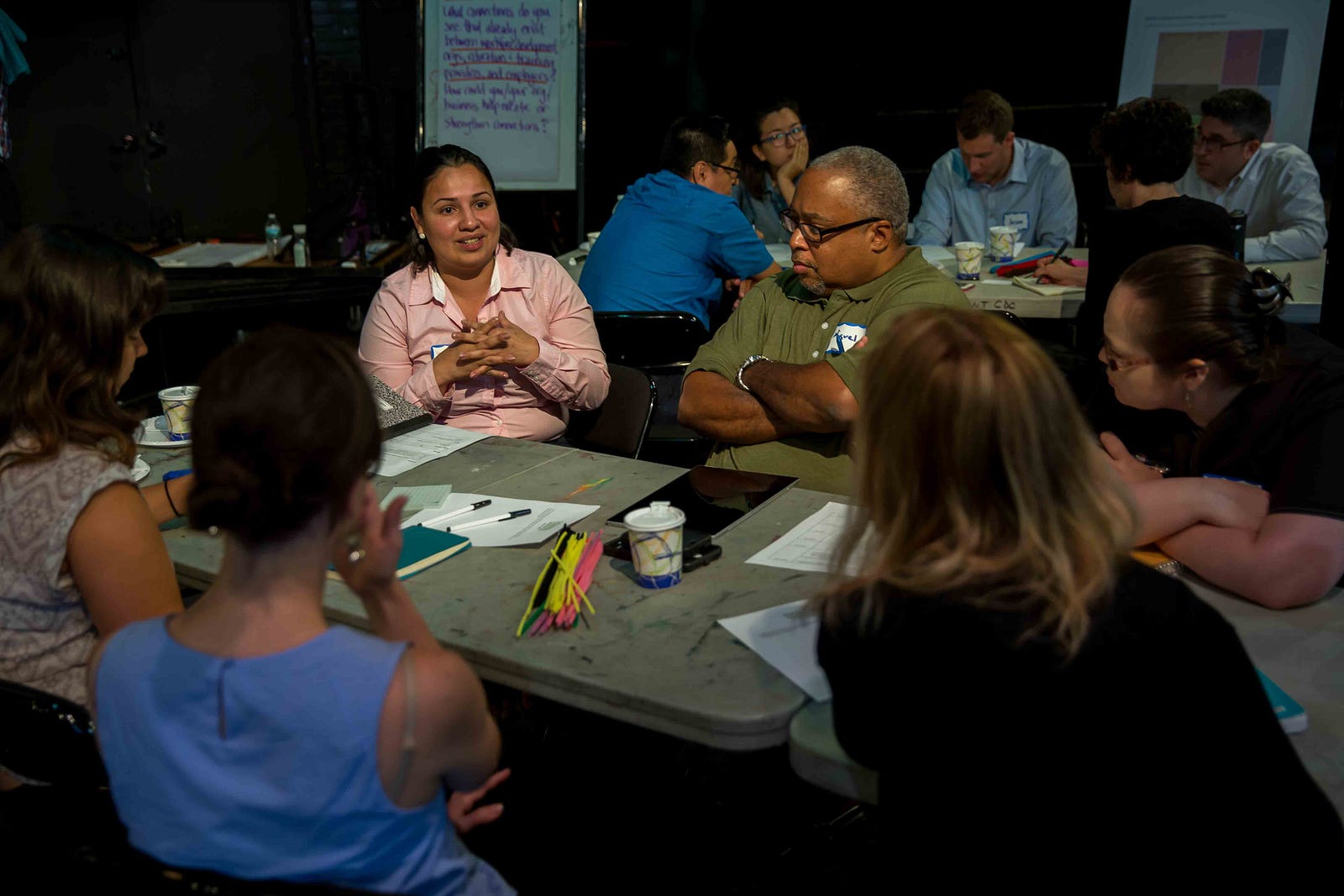
Collaboration Lab participants discuss social and economic resiliency at The Point CDC.
Read More

